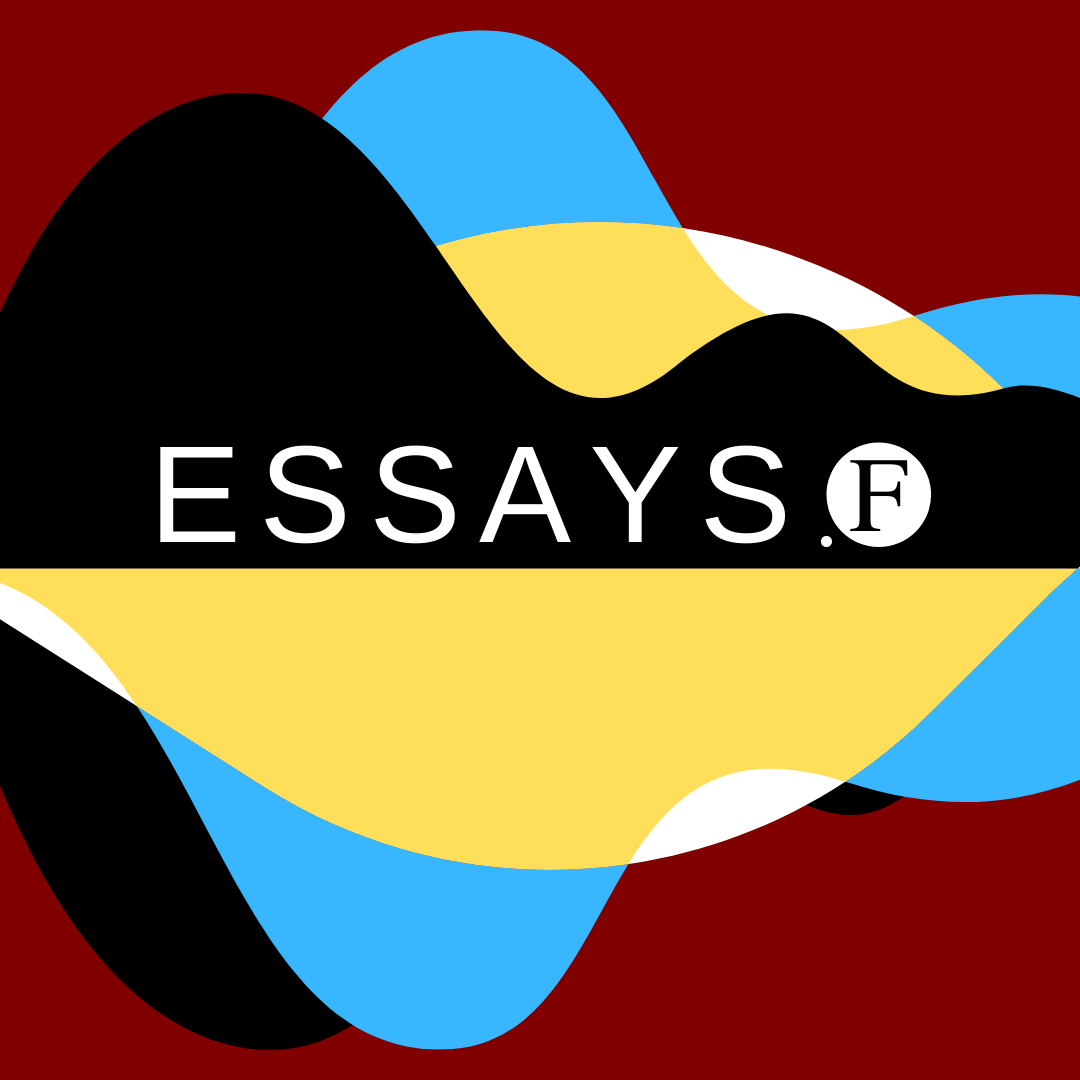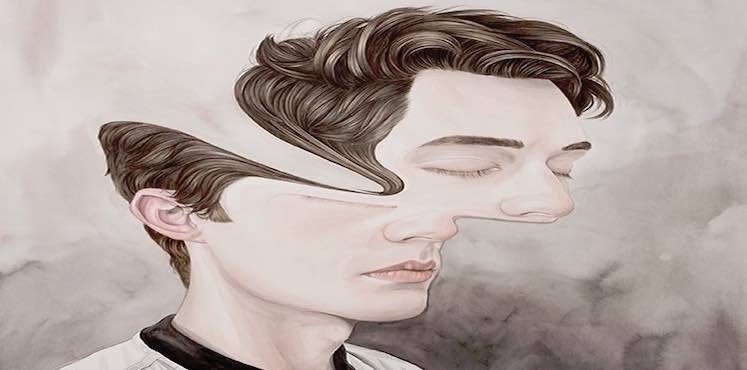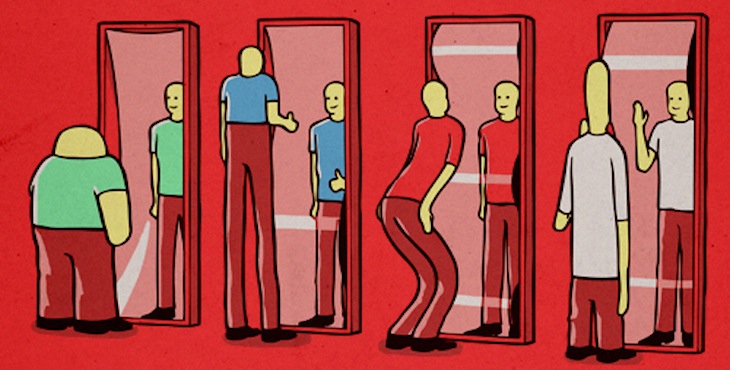Lost in the Supermarket
Dylan Trigg on anxiety, phobia, and phenomenology
‘Brexit Anxiety Brings Queue of Patients for Psychiatrists‘
‘How Brexit Could Affect People with Anxiety Disorders in the UK‘
‘How Donald Trump Took Residence in our Anxious Brains‘
Hyperbolic though these headlines might be, one would have to be especially myopic to deny that recent global events in Europe and the US have the potential to elevate the individual experience of anxiety. Events such as referendums, elections, to say nothing of Donald Trump’s Twitter feed, are all inherently anxiety-inducing; all involve periods of anticipation, hoping for the best, preparing for the worst, each accompanied with an overwhelming sense of powerlessness in the face of an unstoppable force.
What role can philosophy play in helping to understand anxiety? In fact, philosophy has a rich history of venerating anxiety as the philosophical mood par excellence. In the writings of the Stoics and the Epicureans, anticipatory gestures are evident not only toward current treatments of anxiety in cognitive behavioural therapy, but also conceptual understandings conceived in existentialism. Confronting death, focusing on the present, acting in accordance with our beliefs, and, in the case of cognitive behavioural therapy, adjusting our thinking: these are only a few of the lessons modern thought has inherited from ancient philosophy.
Oddly enough, given the attention philosophy has given to anxiety, very little has been said on the actual experience of the mood. What philosophy—and phenomenology in particular—have said a lot about is how anxiety can be a transformative and educational resource. Such a tradition is traceable from Kierkegaard to Heidegger. In its veneration of the mood, however, phenomenology has left to one side a group of less metaphysically ambitious and more concrete questions. What is it to be anxious? How do we experience our bodies, other people, as well as space and time when we are anxious? Such questions can be approached in any number of ways. We could think about anxiety as a state to be observed. Or we could approach it as a set of cognitive and neurological processes to be quantified. But while these perspectives have their own value, they miss out a key element of anxiety: its relation to the world. Anxiety is not just something that occurs ‘internally’ or ‘mentally’; rather, the experience of anxiety is both shaped and expressed by our relation to the world more broadly.
In my book, Topophobia, I have tried to demonstrate the complex way in which anxiety is expressed and shaped by our relation to the world through conducting a phenomenological analysis of spatial phobias. In part, the inspiration for this book is scholarly and conceptual, but it is also personal and biographical, and stems from my experience of agoraphobia. The experience of being irrationally anxious on a bridge, or in a supermarket, or on a bus in the face of no discernible danger raises a series of questions broader than that of the experience of anxiety. To what extent is our experience of space mediated by other people? What role does the home play in a sense of self? To what extent do we ‘own’ our bodies? And, finally, why does anxiety carry the affective weight it does? I situate these questions in relation to cases of agoraphobia, which concerns a very specific kind of anxiety. Yet the anxiety tied up with agoraphobia does not mark a radical departure from everyday life; it merely amplifies an anxiety that is common to all of us in varying ways.
Take the body. For the most part, our bodies not only provide the means of getting placed in the world, they also support and reinforce a sense of self and generate the possibility of communicating with other people. Yet because the body holds an irreducibly central place in our sense of self, it is also vulnerable to disruption. Think here of how easily illness, fatigue, or pain affect not only a localizable part of the body, but our experience of the world more generally. The actions we usually take for granted are now called into question, and the body can appear less as an extension of self-identification and more as an object under investigation.
In cases of anxiety, this experience transforms the body from a centre of unity to a site of disunity, reshaping both a sense of self and a sense of world. Philosophers such as Merleau-Ponty have drawn our attention to the ambiguity of the body, but phenomenologies inspired by Merleau-Ponty have tended to overlook how bodily ambiguity can also have an emotional impact on our sense of self. Consider here the different levels and sides of the body: it is as much something that belongs to us as it is something that we ourselves are dependent upon for our survival. For the most part, this relationship is harmonious. We go about our daily existence without having to reflect or interrogate the functions of the body; the body is present not as a separate ‘thing’, but as an extension of who we are. Anxiety presents another side to this vision of bodily harmony. In part, this challenge is played out in the actual experience of anxiety as bodily in structure. Symptoms such as trembling legs and palpitating heart are not simply ‘faults’ in the physical structure of the body, but rather expressions of the body’s alienation from self-identity, obligating us to question the limits we have in terms of bodily ownership and agency.
Phenomenology is well suited to examining these transformations undergone when anxious. A central claim phenomenology posits is that our conscious life is tied up with the world. What this means is that an analysis of emotional and perceptual states is also an analysis of the broader cultural, spatial, temporal, historical, and gendered conditions that constitute those states. Importantly, phenomenology’s onus on the complex ways in which emotional states are formed may also shed light on how the world more broadly can become determined by an atmosphere of anxiety. One of the questions that sparked my interest in the phenomenology of anxiety concerned how a place as innocuous as a supermarket could become charged with an anxious quality. At least two options present themselves. First, does the anxiety derive from the place itself, as though specific features of the place—the lighting, layout, and so on—‘caused’ anxiety to appear? Or do anxious individuals bring anxiety to places such as supermarkets, as though the place were otherwise a blank canvas for each and every customer?
In fact, beyond these two options, there is a third more phenomenologically orientated route, namely, that the world is structured at all times by the affective nature of intentionality. What this means is that a place assumes the quality of being anxious thanks to the dialogue between the body and the surrounding world. Such thoughts are not limited to cases of anxiety. Our relation to the world, anxious or otherwise, is not like that of a detached spectator situated in homogenous space; it is shaped by the moods we are in and those moods determine how the world presents itself to us. Yet at the same time, the world is not mouldable to our moods; specific details of the world act upon us. Consider the everyday experience of entering a room. What gives a room its atmosphere? In part, the atmosphere stems from the room itself, its collective of objects, lighting, furnishings, and so forth. Yet how those specific objects are interpreted is in part mediated by the moods we are in. A phenomenological study of anxiety, as I have developed¸ involves recognizing how anxiety is created through a mutual shaping between our own affective relation to the world and the world’s specific influence upon that relation.
Anxiety’s dialogical structure is also traceable in terms of our relations with other people, or intersubjectivity. One of phenomenology’s salient contributions to debates on intersubjectivity is to underscore how the world we inhabit is, from the outset, a shared world. As both Sartre and Merleau-Ponty have elaborated, other people are not incidental objects amongst tables and chairs. Nor is our relation to and knowledge of other people determined by a set of abstract deductions. Rather, other people affect us in a pre-reflective way, whether it is in terms of putting us at ease or invoking anxiety. Agoraphobia reveals to us in an especially striking way how our lives are shaped by our relation to other people. In his famous account of the gaze and the look in Being and Nothingness, Sartre identified how other people can enter our perpetual horizon as destabilizing presences. What he overlooked is how other people can also augment our experience of the world in a more harmonious way.
Agoraphobia straddles a line between each of these poles. On the one hand, because our lives are inextricably bound with other people in a primordial way, there is—to follow Sartre—no exit from others. Even an attempt at fleeing from others merely underscores their centrality, a point that is evident in a phenomenological study of agoraphobia. I ground this idea in the claim that other people position the locus of control outside of the agoraphobic person’s boundaries. In other words, whereas an agoraphobic person can ‘manage’ anxiety through avoiding certain places and situations, what they cannot control is the thoughts and perceptions of others. On the other hand, other people—so-called trusted others—can also transform an agoraphobic person’s experience from one of insecurity to one of stability. Yet again agoraphobia may not be so different from non-agoraphobic modes of existence: how and to what extent other people can alter our perception of the world may be vividly clear in agoraphobia, but it is also an invariant structure of human existence human more generally.
The anxiety peculiar to agoraphobia may seem distinct from anxieties surrounding more global events such as Brexit and Trump. But what connects these apparently distinct events is that in each case anxiety manifests itself as the rupture of a story we tell ourselves about the kind of world we inhabit. Whether that story involves the sense of being a particular kind of self or whether it involves a set of political ideals, anxiety presents itself as the unmasking of beliefs about how we think the world ought to be, exposing us in no uncertain terms to the more pervasive contingency underpinning those beliefs.
Image credit: Nicholas Eckhart, ‘Groceries‘
The Source Code
This essay is based on the book Topophobia: A Phenomenology of Anxiety by Dylan Trigg (Bloomsbury, 2016).






